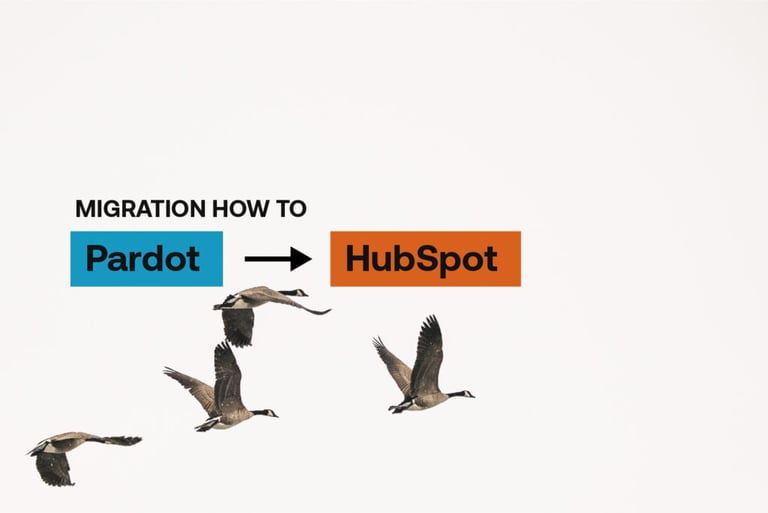We’ll walk you through the Pardot to HubSpot migration, show you why HubSpot’s powerful marketing automation tools are a big step up from Pardot, and explain why making the switch could be a smart move. So, come along for the ride on this digital transformation journey and let’s take your marketing game up a notch.

Why Should You Migrate from Pardot to HubSpot?
The current market scenario is pushing firms to seek cost-efficient and robust automation solutions. Here, HubSpot stands as an attractive alternative to Pardot due to its advanced features coupled with cost-effectiveness. The shift from Pardot to HubSpot allows businesses to stay competitive while also increasing efficiency.
HubSpot comes with a comprehensive suite of tools that enhance your marketing efforts, offers an intuitive and user-friendly interface, and is known for its robust customer support. HubSpot’s integration capabilities allow seamless communication between various software, eliminating data silos. With all data in one place, you can utilize HubSpot’s built-in analytics tools to make data-driven decisions and strategies.
Completing a Pardot to HubSpot migration can be a strategic move to stay ahead of the curve. Keep reading to learn how.
Ace Your Pardot to HubSpot Migration: A Step-by-Step Process
- Assess Your Data and Needs: Start by assessing your data and marketing goals. Determine what data you need to migrate, what integrations you have, and what your marketing objectives are. Evaluating your needs ahead of time can help to streamline the migration process.
- Choose a Dependable Migration Partner: Choose a migration partner that specializes in Pardot to HubSpot migration. Look for a partner with a proven track record of success and a deep understanding of both platforms.
- Export and Clean Up Your Data: Export all your Pardot data, including contacts, leads, and campaigns, and clean it up by removing duplicates, outdated or incorrect information, and other unnecessary data.
- Map Your Data: Map your Pardot data to the corresponding fields in HubSpot. This ensures that all of your data is migrated accurately and in the correct format. Follow along to the end of the blog for our Pardot ➡️ HubSpot Fields Cheat Sheet.
- Migrate Your Data: Use the migration tool provided by your migration partner to migrate your Pardot data to HubSpot. The process may take some time, depending on the amount of data you have.
- Test Your Data: After the migration is complete, test your data to ensure that it was migrated accurately and is functioning correctly. This step is crucial to avoid any issues during the transition period.
- Train Your Team: Once your data is migrated, train your team on how to use HubSpot and its features. HubSpot offers a wide range of marketing tools and features, and your team must understand how to use them effectively.
Simplify Your Pardot to HubSpot Migration with Lake One
At Lake One, we understand the intricacies of marketing automation platforms and the challenges of migrating between them. Our team of experts is skilled in both Pardot and HubSpot technologies, enabling us to facilitate a seamless transition for your business. We offer in-depth consultation, data migration assistance, and training to make sure you can fully leverage the power of your new HubSpot platform.
Get started! Contact us today to learn more about a Pardot to HubSpot migration and how we can assist you in enhancing your marketing efforts.


